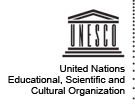CEPPAS proposes to train women journalists on the use of ICTs for investigative journalism. The project targets Verapaces, North East and Petén; Western; South East, Central and Metropolitan Regions which suffer a profound digital divide and where women have little say in the community media, in which they work. The proposal is based on three pillars: gender equality; community media; technology and innovation with emphasis on FOSS.
Three workshops of three days each will involve women-journalists. CEPPAS will also hold a Forum on Women and Journalism involving media and advocacy...
